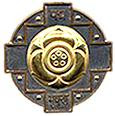Pongal History:
Origin and History of Pongal can be dated back to the times of the Sangam Age ie. from 200 BC to 300 AD sanskrit Purana also contains mention Pongal. Originally Pongal festival was celebrated a Dravidian harvest festival.
As part of the Pongal festival customs, seeing 'Pavai Nonbu' one of the most prominent festive occasions that took place during the Pallava rule. Celebrated in the Tamil month Margazhi, this festival was initiated by young girls offered prayers to God to send rain, thereby paving the way to bring prosperity to people. Entire months of this feast, do not keep milk or dairy products. They do not oil their hair during this period. All these traditions led to the celebration of Pongal festival days.
Legends of Pongal festival:
The story of Lord Shiva:
When it came to pass that Lord Shiva asked his bull, Basava name visiting Earth and meeting people. He was asked to convey the message that people should take an oil massage and bath every day, and as far as dining is concerned, they can only eat once a month.
By mistake mistakenly sent the bull to the people that they should eat every day, and oil massage and bathing, as it should happen only once in a month. This action of Basana made Lord Shiva very angry. As a result, Lord Shiva punished him to live on earth forever and help people in plowing the fields and growing more food.
The story of Lord Indra:
As it happened that Lord Krishna in his childhood days decided to teach Lord Indra a lesson when he was a bit too arrogant after being king of all gods. Lord Krishna went meet cowherds told them to stop worshiping Lord Indra. This made Lord Indra got angry and he created a major thunderstorm with rain, which continued three consecutive days. See this disaster people went to Lord Krishna to cry for help. Then Lord Krishna lifted the Govardhan Mountain
Pongal Celebrations:
The Pongal festival normally falls on 15 January. For the Tamils, it is one of the most prominent festivals, the celebration of which is with full joy and enthusiasm. The entire South India is actively involved in preparations. The chilly weather acts as a messenger for the people of South India as it suggests those of Pongal festival.
The party is thoroughly enjoyed by people on four consecutive days. It starts with Bogi Pongal and ends with Kaanum Pongal, which is also known as Thiruvalluvar Day. This festive occasion has a lot of importance, especially for those farmers who put their heart and soul of sowing and harvesting of crops. The Pongal festival celebrations of the end of harvest season.
During the Pongal festival, the markets are flooded with different kinds of farm produce. Among Hindus have celebrated as a thanksgiving festival, where people offer their sincere thanks to the Hindu gods showering their blessings on them. On the first day is more popularly called Bogi Pongal, people thank the Lord Indra, the God of heaven.
The second day dedicated to Lord Surya. The third day is meant to thank the cattle. The fourth day is known as Kaanum Pongal, marks the end of the Pongal festival. On this day people go shopping, visit their friends and relatives, exchange greetings and wished each other 'Happy Pongal'. People visit their local temples and seek divine blessings. The entire nation swings, sings and dances to the strains of music.
Pongal Kolams:
When it's time for Pongal festival celebrations, almost all houses in the entire south India
In the epic of Mahabharata, it was indicated that the gopis as milkmaids used to draw Kolams to reduce their pain by not having Krishna with them. The art of Kolam making is practiced in almost all states, but known under different names such as Alpana in Bengal, Mandana in Rajasthan, Muggulu in Andhra Pradesh and Puvidal in Kerala, Rangoli in Maharashtra and Karnataka and Sanjhi in Uttar Pradesh.
Kolam is not only an aesthetic art, but a means to express the happiness and prosperity. The rice flour find their way into shape Kolam patterns for Pongal. The red color is used to restrict Kolam is believed to ward off evil spirits. About Pongal festive occasion, get the whole family busy with the task to make Pongal kolam designs. A Kolam is simplistic in design, or may consist of intricate patterns.
Four days of Pongal:
The celebration of Pongal festival continues for four consecutive days. The festival usually fall in the month of Shravan. It is basically a harvest festival which is celebrated with fervor and joy of people in the southern states of India South India comes alive when it is time to Pongal celebrations.
Four days of Pongal:
Day 1: Bogi Pongal:
The first day marks the beginning of a new start. Therefore, on this day, all old entries are discarded and thrown away.
Day 2: Surya Pongal:
The term Pongal means boiling over. The second day begins with boiling fresh milk to an extent that it crosses the boundary of the vessel. This is one of the main traditions of Pongal festival. Delicious sweets are prepared for the near and dear. People visiting the homes of their friends and relatives and exchange greetings.
Day 3: Maattu pongal:
It is a day to thank the cows and buffaloes, as they have an important role to play in the harvesting of crops. Had they not been there, it would not have been possible to plow the land. The third day witnesses the hosting agreement a violent bull taming contest that often has been described as Jallikattu.
Day 4: Kaanum Pongal:
This is the most happening days. Known as Kaanum Pongal, the fourth day designed to celebrate and freaking out with friends and family. People go on family picnics, eat sugarcanes and decorate their houses with beautiful Kolams.










